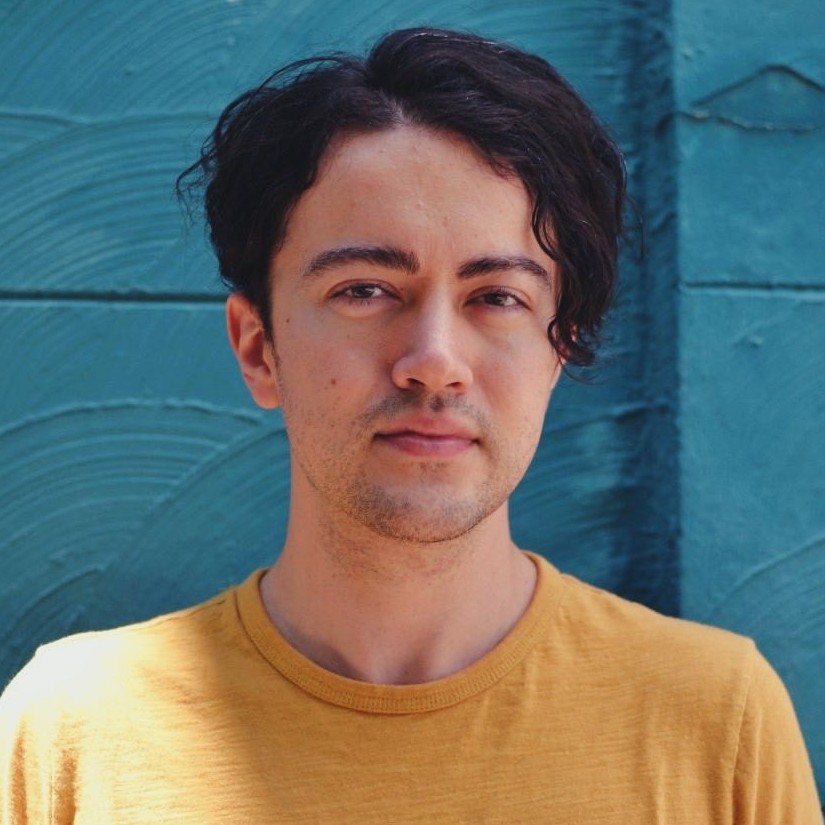As you may recall, 2017 saw the publication of Temporada de huracanas (translated to English by Sophie Hughes as Hurricane Season), Mexican writer Fernanda Melchor’s most highly acclaimed novel to date. Only the next year, thanks to its ever more eye-catching and resounding presence in the media (book reviews, write-ups, comments, author interviews), did I get my hands on a copy. But I didn’t read it right away: at the time, I left the book lying around on some free plot of my desk. It was in June of 2019—when it was announced that the novel had won the International Literature Award in Germany—that I decided to salvage it from my stack of unfinished tasks and get down to reading with no further ado. The prize jury’s decision, furthermore, was quite the enticing invitation to sink into its pages:
Fernanda Melchor has written the novel of poverty in twenty-first century global capitalism, the novel of poverty-born violence against women, against homosexuals, against those who are weaker. The novel of the merciless struggle of the weakest against the even weaker and against themselves.
I must confess, it took me several days to get through its more than two hundred pages. But my slowness was not due to disinterest or laziness: the book’s visceral, relentless violence in its use of language and its unsparing depiction of the acts committed in each of its eight chapters prevented me from progressing any faster. In that sense, its final paragraphs were a sort of safe harbor for me: the last chapter was the only one to staunch a little of the plot’s overarching rawness. In the three pages with which Hurricane Season concludes, we bear witness to the burial of a group of unidentified corpses—men, women, and children, all victims of organized crime—carried out by an old man. In contrast to the brutality put on display throughout the novel, the gravedigger speaks to them very sweetly as he prepares them, one by one, to be turned over to the mass grave:
Rain’s coming, the Grandfather told those dead men and women while he watched, with relief, as fat clouds drew a dim veil across the sky. […] Don’t you worry, don’t fret, you just lie there, that’s it. The sky flashed with lightning and a muffled boom shook the earth. The rain can’t hurt you now, and the darkness doesn’t last forever. See there? See that light shining in the distance? The little light that looks like a star? That’s where you’re headed, he told them, that’s the way out of this hole.
I’m not a big fan of TV series. And although I’ve seen some that are now considered classics (The Sopranos, House, and Breaking Bad, for example), I don’t tend to invest my time in binge-watching. Nevertheless, almost as soon as its first season premiered in 2014, the ample praise and references earned by crime series True Detective caught my attention. And, once I had made my way through its own eight chapters (also a few years behind, I must confess: I tend to show up late to things that really matter in my life), I agreed with the critics’ overall assessment: the series, created by Nic Pizzolatto for HBO, is truly remarkable. Beyond the striking and intriguing mystery of its plot, we might say the screenplay, at times, reaches almost philosophical heights.
Ever since I first watched it, I have gotten a thrill from replaying the same five minutes of a dialogue scene from the final episode: a conversation between the extraordinary duo of actors who play the leading detectives. Martin Hart (Woody Harrelson) visits Rust Cohle (Matthew McConaughey) in the hospital, where he is recovering from the injuries he suffered in their final clash with their criminal quarry. It’s after midnight and the two partners talk outside, by the hospital’s main entrance. Rust remembers, painedly, how close he came to death and his discovery that, just as he was about to lose his life, he perceived a darkness very different from the darkness we know: a darkness made of a different substance—almost warm, even loving. From there, he explains to Martin that he has spent many nights looking up at the stars and thinking, and he has realized that, in reality, there is just one single story in the universe. And it’s the oldest story of all: the story of the eternal battle between light and darkness. Martin answers that, in the meantime—there and then—the sky is sadly still too gloomy. Rust answers, a few seconds later, that he is misinterpreting the question. And he explains: “Once there was only dark. If you ask me, the light’s winning.”
The closeness between the conclusions of True Detective, Season 1 and Fernanda Melchor’s Hurricane Season fascinates me. That little light of hope at the end of both stories of crime and violence restored my spirits. Without it, I think my experience as a viewer and reader would have been encumbered by a heavy weight of desolation and sorrow. Nonetheless, the more I pondered both works of art, the more I seemed to make out varied and suggestive points of contact between the Mexican novel and the US TV series. Of course, I don’t mean to imply any sort of plagiarism on the part of the Veracruzan writer. Rather, I suspect that Melchor perhaps found in True Detective a set of commonly-held and stimulating elements for the aesthetic she was seeking to develop in her story. I should clarify that, to date, I have found no articles, references, or statements (among the many that are available) that suggest or support the hypothesis I put forth in the coming paragraphs.
Allow me to repeat myself: I suggest these connections between Hurricane Season and True Detective as creative affinities, not direct and inflexible equivalences. Firstly, we have as the starting point, obviously, an enigmatic femicide. True Detective opens with the macabre discovery, at the foot of a tree in the middle of nowhere, of a girl who has been murdered. Her body is found naked, bound by the wrists and gagged, crowned with a deer’s antlers and with the mark of some sort of spiral on her back. From the tree hang intertwined branches, forming strange triangles or pyramids. These elements seem to be part of some grim ritual: frightful ceremonies, perhaps, linked to witchcraft, voodoo, or satanism. Meanwhile, Hurricane Season begins with the discovery of the corpse of the so-called “Young Witch” by a group of kids in the waters of a river in the Mexican semitropics. Her body bears many signs of violence. From the start, we suspect that this murder might be linked to her practice of witchcraft. And these dark acts will, of course, form one of the main axes around which both plotlines are built.
Secondly, there is a significant parallel between the environments in which the two stories take place. On the one hand, we have Erath, in the US state of Louisiana; on the other, La Matosa, an imaginary town located perhaps on the coast of Veracruz. As we notice, these are territories united by the Mississippi and the Gulf of Mexico. Geographies characterized by their swamplands, their lush carnivals, their intensive oil extraction, their pollution—of various kinds—as an important sign of human predation, and their unorthodox religiosity marked by fanaticism and corruption. In fact, the camerawork of True Detective is strategic, persistently showing, at key moments, the dirty, oppressive, and run-down landscape as a dramatic metaphor for what is unfolding in the plot.
Thirdly, we have the disturbing presence of gothic houses as settings where certain main characters of both the series and the novel seek refuge. These somber, dilapidated structures have allowed for talk, in Fernanda Melchor’s case, of a “southern gothic.” In fact, these aspects linked to US literature should be studied in greater detail: the significance of the locked, inaccessible room of William Faulkner’s “A Rose for Emily” has not yet been pointed out as a fundamental precedent to the last pages of Hurricane Season.
Fourthly, both works undertake an exploration of highly traditional masculinities. In True Detective, Martin Hart has an ultra-conservative and chauvinistic marriage, in which the image of domestic harmony is more important than effective solutions to the conflicts that plague the couple. Hart is a compulsively unfaithful husband for whom violence is almost the exclusive means by which to interact with women, whether they be his wife, his daughters, or his female coworkers. The case of his partner, Rust Cohle, is not much different. Tortured by his nihilistic vision of the world, he only allows himself to open up about his emotions when he is under the influence of some substance or another. In Hurricane Season, violence is also the only legitimate and socially legitimated means by which to display manliness. Therefore, the book is rife with scenes of criminality, physical and psychological abuse of women, and emotional expression exclusively in hypermasculine spaces while in the throes of intoxication and addiction. In fact, several of the names used in Melchor’s novel show us, in the background, frustrated hopes for a stereotypical manhood: consider the youngsters Brando (a reference to actor Marlon Brando) and Luismi (a caricaturesque allusion to pop singer Luis Miguel).
The final link I wish to highlight—but not the least significant—is the presence of hurricanes as meteorological phenomena whose violence shakes political, social, economic, and cultural structures, and that periodically herald inevitable historical shifts: a sea change for the communities they affect. In True Detective, the storms’ destructive passage gives rise, directly or indirectly, to essential junctures in the mystery’s plot; we recall Andrew (1992), Rita (2005), and the absolutely devastating Katrina (also 2005). Likewise, in the Mexican novel, hurricane season is always awaited with overwhelming anxiety: each year, the storms’ consequences of hardship, death, and destruction for the residents of La Matosa are unpredictable, and not only due to their natural effects.
As I hope to have shown here, meaningful and hitherto unnoted thematic concerns and connections exist between Hurricane Season and True Detective, Season 1. I do not mean to imply that Fernanda Melchor’s novel lacks substantial literary references as well. The very construction of its middle chapters, in a single burst, is inspired by the narrative technique of The Autumn of the Patriarch by Gabriel García Márquez. And I have no doubt that the Veracruzan writer had The Edge of the Storm by Agustín Yáñez very much in mind, with its allusions to the weight of hearsay as an aspect of socialization in a community and to the novel’s title as a declaration of the catastrophes delivered by natural phemonena and a metaphor for imminent social convulsions. Likewise, La Matosa is united in its own right with imaginary places immortalized in the greatest of Latin American literature: Macondo, Santa María, Comala, Santa Teresa.
In these final lines, I believe my food for thought should be the way contemporary authors seem to be producing new literature. What final conclusions might we draw from these unexpected parallels between Hurricane Season and True Detective? Here, my answer is up for debate. In a world where young people are hyperconnected and spend hours watching videos on YouTube or TikTok, where they read and write to the tune of their Spotify playlist, where they are held captive every day by the 280-character updates and controversies of X (formerly Twitter)—in this world, it may be the case that writers are changing their aesthetic strategies and practices, their creative and inspirational materials.
Surely we have already reached the exhaustion or conclusion of the artistic tradition we might call “Borgesian”: a readerly tradition in which literature was concocted out of other literatures. Today, in contrast, authors seem to have found, in mass media, spaces beyond books. And even opportunities for financial advancement: Should we be surprised, for example, that contemporary writers are invited by streaming services to develop screenplays for their series? Stories written in constant hopes of attaining success and surviving over the course of many seasons, to the delight of their creators and of today’s endlessly insatiable audiences.
Incidentally, while I was writing these reflections, I learned of the premiere of the movie version of Hurricane Season on Netflix. And of the highly anticipated arrival of the fourth season of True Detective, announced a few years ago by HBO and starring the multi-award-winning Jodie Foster. Will they hold some pleasant surprise for me, after having written these pages with all my enthusiasm?
Translated by Arthur Malcolm Dixon



